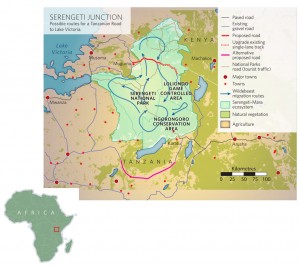Are the rivers in Tanzania at risk of drying up? The contested causes of environmental change
This is a summary of a presentation by Professor Bruce Lankford of the University of East Anglia at a seminar on 10 October 2016.
The facts are startling. In 2004 Bruce Fox, whose family run a safari and hotel company in the Ruaha National Park, pointed out that in 1993 the Great Ruaha River dried up in the dry season, with dire consequences for fish in the river, plants and animals in the game park, and the belief that it would affect electricity generation at the Mtera and Kidatu dams downstream (see below), which supply hydro-electricity to Dar es Salaam, Dodoma and many other parts of Tanzania. In more recent years, it has dried up every dry season. The Great Ruaha river drains an area the size of Wales and feeds into the Usangu or Ihefu wetland. Fox asserted that it was not a coincidence that the drying up had started after the World Bank and other donors paid for projects that increased the amount of abstraction of water for irrigation and domestic provision via so-called modernised concrete weirs which could divert much or all of the flow onto large areas of irrigated land in the Usangu plains – large state farms (now privatised) at Mbarali and Kapunga and many other smaller schemes. Other environmental concerns included the very large numbers of cattle in the Usangu plains, and one of the Government’s responses was to move them all out, in the erroneous belief it would ‘save water’.
Prof Lankford had already done work on the hydrology of the river, and was involved in two major research projects. With numerous other research projects taking place in the plains, Usangu has become one of the most researched areas in Africa. There were some important conclusions. One was that the amounts of water cattle could drink was not so much that it would make a significant difference to the flows, even in the dry season. Another was that the drying up had only marginal impact on the generation of electricity, because by far the greater part of the water flowed into the dams during the rainy seasons, and was stored in the two dams – only a little got through in the dry seasons anyway. Several minor causes of flow reductions were identified, including deforestation upstream, greater diversion of streams for small-scale irrigation upstream, and greater evaporation due to climate change, but none sufficient to make a big overall difference.
The accumulation, however, of water abstractions, including from small diesel pumps and the construction of the concrete weirs has had, over time, an impact. They allow large amounts of water, in some cases the whole flow, of tributaries to be diverted for irrigation. They were associated with water rights which gave irrigators rights to an absolute amount of water, even when there was little in a river. They were often not well managed, so that water taken out of rivers ran to waste, or was used in excess.
The conclusions, some of which are expressed in The Great Ruaha Restoration Campaign, involve rewriting water rights, prohibiting extraction when flows are low, and using weirs that divide the water proportionally, leaving some flowing downstream. Some progress is being made, but so far not sufficient to restore the flows through the Ruaha game park.


